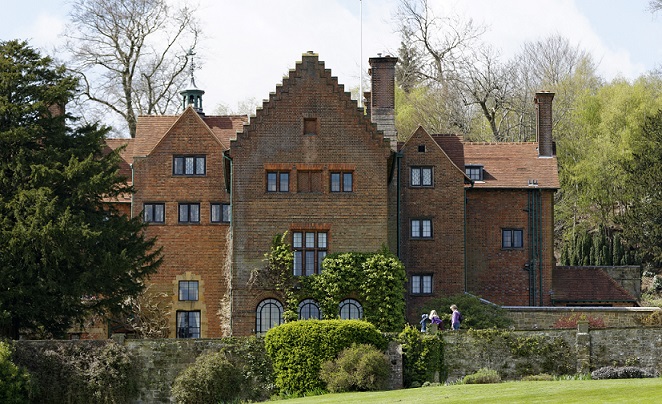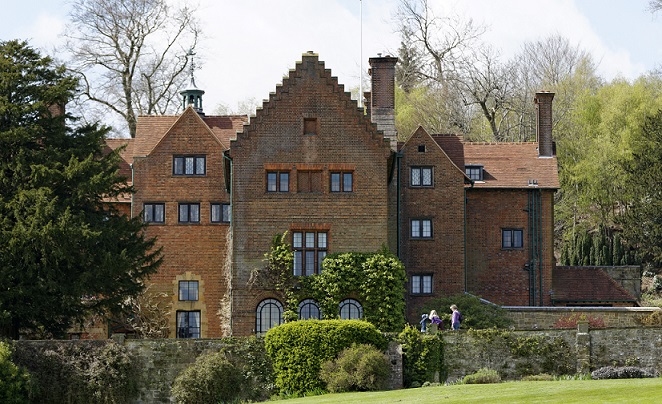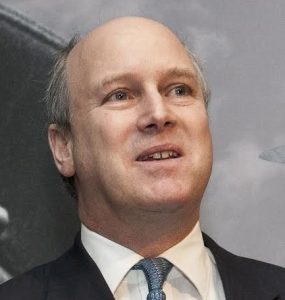
Finest Hour 167
Death Of A Hero

August 2, 2015
Finest Hour 167, Special Issue 2015
Page 09
By Katherine Barnett
 Chartwell ManorChartwell, the much-loved home of Sir Winston Churchill for over forty years, is commemorating the fiftieth anniversary of his passing and state funeral with a dedicated exhibition entitled “Death of a Hero,” which in sixty objects tells the story of the latter years of his life, his passing, the state funeral and the legacy he has left us with today.
Chartwell ManorChartwell, the much-loved home of Sir Winston Churchill for over forty years, is commemorating the fiftieth anniversary of his passing and state funeral with a dedicated exhibition entitled “Death of a Hero,” which in sixty objects tells the story of the latter years of his life, his passing, the state funeral and the legacy he has left us with today.
As House and Collections Manager of Chartwell, it was my job to curate this moving and poignant exhibition. We took our inspiration from the words of Clementine Churchill. According to their youngest daughter Mary Soames, on the evening of her father’s state funeral, her mother turned to her and said, “You know, Mary, it wasn’t a funeral—it was a Triumph.” It is this feeling of the awe of the occasion, and the spectacle which would undoubtedly have been approved of by the man himself, that we honour through this exhibition.

2024 International Churchill Conference
It is common knowledge that Sir Winston Churchill is buried at Bladon, surrounded by family and overlooked by his ancestral home of Blenheim, but this was only decided in the last few years of his life. For much of his time at Chartwell he intended to be laid to rest by having his ashes scattered over the lawn to the south of the house, looking out over the view of the Weald of Kent, which he had fallen in love with many years earlier. It is through documented evidence to this effect that we gain an insight into just how much Chartwell meant to him, beyond being the home he loved but where, for many years, he hoped to remain forevermore.
It is in this context that “Death of a Hero” explores why he changed his mind and why he was not at Chartwell when he died. We also look at the magnificent lying-in-state which he was afforded by HM The Queen, the Technicolor occasion of ceremony that was his state funeral (with lots of military bands, as Sir Winston himself requested) and how the world has been changed in innumerable ways as a result of his passions and interests, ranging from developments in science and his talents as an amateur painter.
Our exhibition, which has been extended due to popular demand until 1 November 2015 (having originally been intended to return to our regular biographical exhibition at the end of February 2015), is almost entirely made up of never-before-seen items, either from private collections, Chartwell’s stores or the archives of partner organisations. “Death of a Hero” is therefore a once-in-a-lifetime opportunity to see the story of his passing, depicted through such gems as the last ever photograph taken of Sir Winston Churchill, the flag that flew over the Capitol on the day he died and was gifted to Clementine Churchill, personal family documents, and much more.
There are three objects in particular on display in “Death of a Hero” which, to me, are crucial to the story of his passing. Firstly, there is the Duke of Norfolk’s original working copy of “Operation Hope Not,” the aptly-named codename for the planning of Sir Winston’s state funeral. It is a unique piece of history and shows the incredible thought and detail applied to the planning for the day.
Then there is the large folio of newspaper cuttings, gifted to a then two-month-old Randolph Churchill from the editor of the New York Herald Tribune and kindly on loan from the Churchill family. Alongside the cuttings was a cover letter with the moving words: “We treasured him while he lived. And we tried to honor him in death. But all we really did was to give voice to the deep sense of personal grief each of us know in this time of tremendous loss. So that you can hear some of the voices which spoke at this tragic time, we have put them together for you in this book.”
The last of my three star objects, which has been selected to represent his legacy, is a signed photograph of Sir Winston Churchill alongside King George VI, Queen Elizabeth, Princess Elizabeth (later HM Queen Elizabeth II) and her sister Princess Margaret on the balcony at Buckingham Palace on 8 May 1945. The photograph was so dear to Churchill that during his time at Chartwell, the home he loved so much, it hung on his bedroom wall. It was in that moment that his status as a hero was cemented in history, and it is for everything that the moment represents that he should never be forgotten.
Katherine Barnett is House and Collections Manager at Chartwell.
Subscribe
WANT MORE?
Get the Churchill Bulletin delivered to your inbox once a month.




